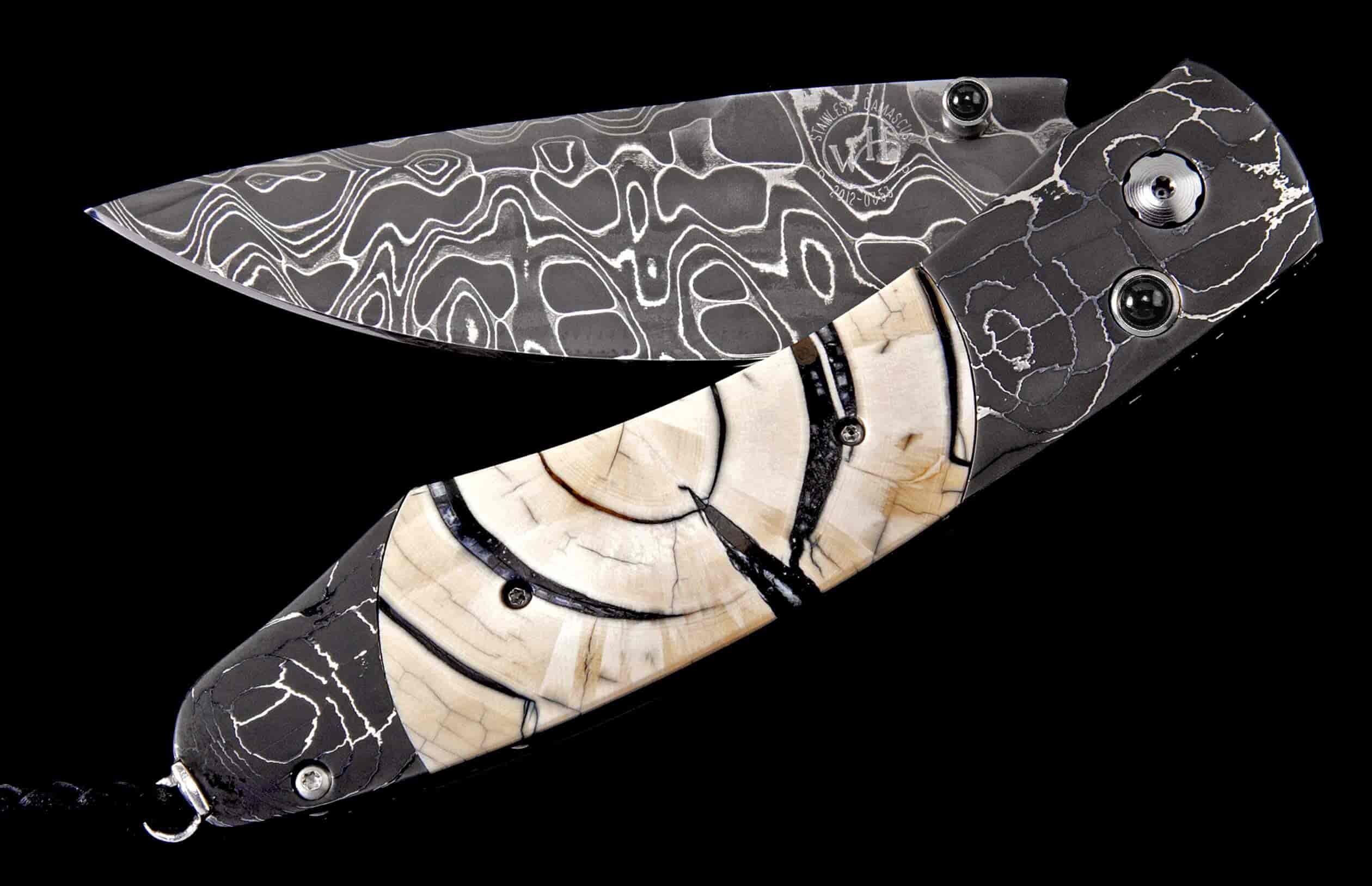Product Details
The Spearpoint 'Adventure' features a beautiful frame in hand-forged, etched 'T-Rex' damascus by Delbert Ealy, inlaid with 10,000 year-old fossil Woolly Mammoth tusk. The blade is 'Intrepid' damascus by Chad Nichols; the one-hand button lock and the thumb stud are set with black onyx gemstones.
A remarkable design that gives you an instrument with a full-size secure grip, and a versatile deep-belly blade, the Spearpoint epitomizes William Henry's core philosophy that superlative function deserves to be elevated to superlative art. The 'Adventure' features some of the exotic materials and forged metals that are the hallmark of William Henry's collections; a timeless heirloom to be proudly worn and used for a lifetime before being handed-down to another generation.
Product SKU: B12 ADVENTURE
Features & Specs
- One-hand button lock system
- Leather carrying case
- Shipped in an elegant wood presentation box
- Dimensions:
Blade 3.06" (77.7mm)
Handle 4.13" (104.9.5mm)
Overall open 7.19" (182.6mm)




